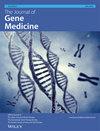Actin filament-associated protein 1-antisense RNA1 promotes the development and invasion of tongue squamous cell carcinoma via the AFAP1-AS1/miR-133a-5p/ZIC2 axis
Abstract
Background
The present study aimed to explore the biological role and underlying mechanism of the long non-coding RNA actin filament-associated protein 1-antisense RNA1 (lncRNA AFAP1-AS1) in the progression of tongue squamous cell carcinoma (TSCC).
Methods
A quantitative reverse transcriptase-PCR (RT-qPCR) was conducted to assess relative levels of the miR-133a-5p, lncRNAs AFAP1-AS1 and zinc finger family member 2 (ZIC2) in TSCC cell lines and specimens, whereas ZIC2 protein levels were measured using western blotting. After modifying the levels of expression of lncRNA AFP1-AS1, miR-133a-5p and ZIC2 using lentivirus or plasmid transfection, we examined AKT/epithelial–mesenchymal transition signaling pathway alterations, in vivo carcinogenesis of TSCC in nude mice and in vitro malignant phenotypes. A dual-luciferase reporter assay was conducted to confirm the targeting relationship between ZIC2 and miR-133a-5p, as well as between miR-133a-5p and lncRNA AFAP1-AS1. Based on The Cancer Genome Atlas (TCGA) database, we additionally validated AFP1-AS1. The potential biological pathway for AFP1-AS1 was investigated using gene set enrichment analysis (GSEA). We also evaluated the clinical diagnostic capacities of AFP1-AS1 and clustered the most potential biomarkers with the Mfuzz expression pattern. Finally, we also made relevant drug predictions for AFP1-AS1.
Results
In TSCC cell lines and specimens, lncRNA AFAP1-AS1 was upregulated. ZIC2 was upregulated in TSCC cells as a result of lncRNA AFAP1-AS1 overexpression, which also promoted TSCC cell migration, invasion, viability, and proliferation. Via the microRNA sponge effect, it was found that lncRNA AFAP1-AS1 could upregulate ZIC2 by competitively inhibiting miR-133a-5p. Interestingly, knockdown of ZIC2 reversed the biological roles of lncRNA AFAP1-AS1 with respect to inducing malignant phenotypes in TSCC cells. In addition, in vivo overexpression of lncRNA AFAP1-AS1 triggered subcutaneous tumor growth in nude mice implanted with TSCC cells and upregulated ZIC2 in the tumors. The TCGA database findings revealed that AFAP1-AS1 was significantly upregulated in TSCC specimens and had good clinical diagnostic value. The results of GSEA showed that peroxisome proliferator-activated receptor signaling pathway was significantly correlated with low expression of AFP1-AS1. Finally, the results of drug prediction indicated that the group with high AFAP1-AS1 expression was more sensitive to docetaxel, AZD4547, AZD7762 and nilotinib.
Conclusions
The upregulation of lncRNA AFAP1-AS1, which increases TSCC cell viability, migration, proliferation and invasion via the AFAP1-AS1/miR-133a-5p/ZIC2 axis, aids in the progression of TSCC.



 求助内容:
求助内容: 应助结果提醒方式:
应助结果提醒方式:


